Abstract
The functional substitutability of stimuli in equivalence classes was examined through analyses of the speed of college students' accurate responding. After training subjects to respond to 18 conditional relations, subjects' accuracy and speed of accurate responding were compared across trial types (baseline, symmetry, transitivity, and combined transitivity and symmetry) and nodal distance (one- through five-node transitive and combined transitive and symmetric relations). Differences in accuracy across nodal distance and trial type were significant only on the first tests of equivalence, whereas differences in speed were significant even after extended testing. Response speed was inversely related to the number of nodes on which the tested relations were based. Significant differences in response speed were also found across trial types, except between transitivity and combined trials. To determine the generality of these comparisons, three groups of subjects were included: An instructed group was given an instruction that specified the interchangeability of stimuli related through training; a queried group was queried about the basis for test-trial responding: and a standard group was neither instructed nor queried. There were no significant differences among groups. These results suggest the use of response speed and response accuracy to measure the strength of matching relations.
Full text
PDF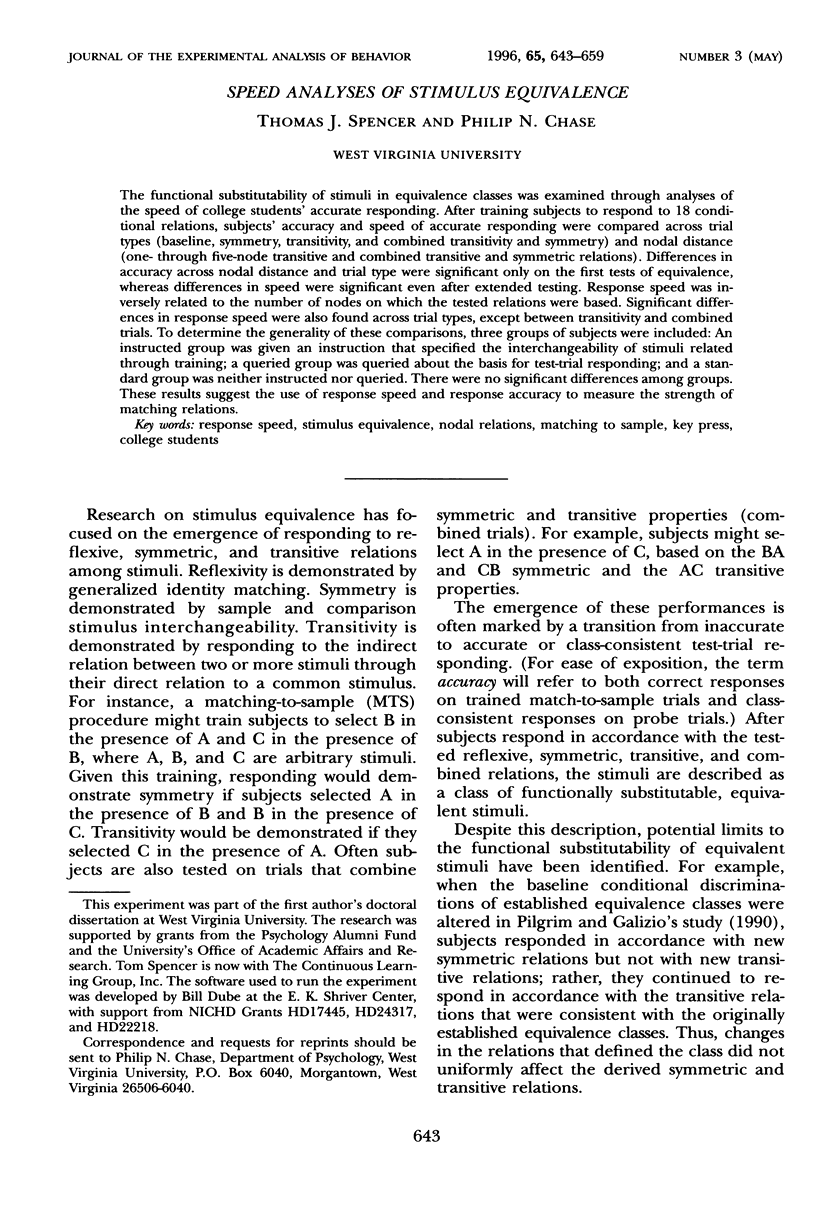
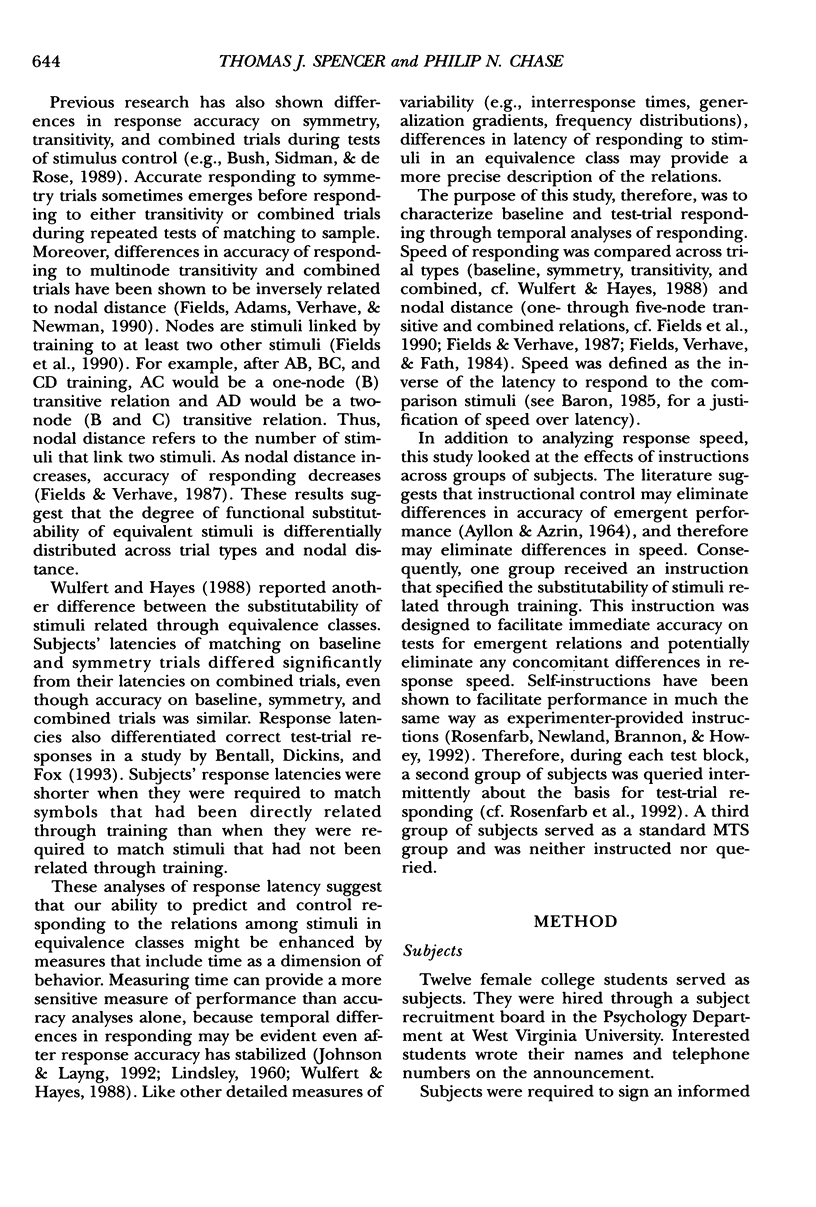
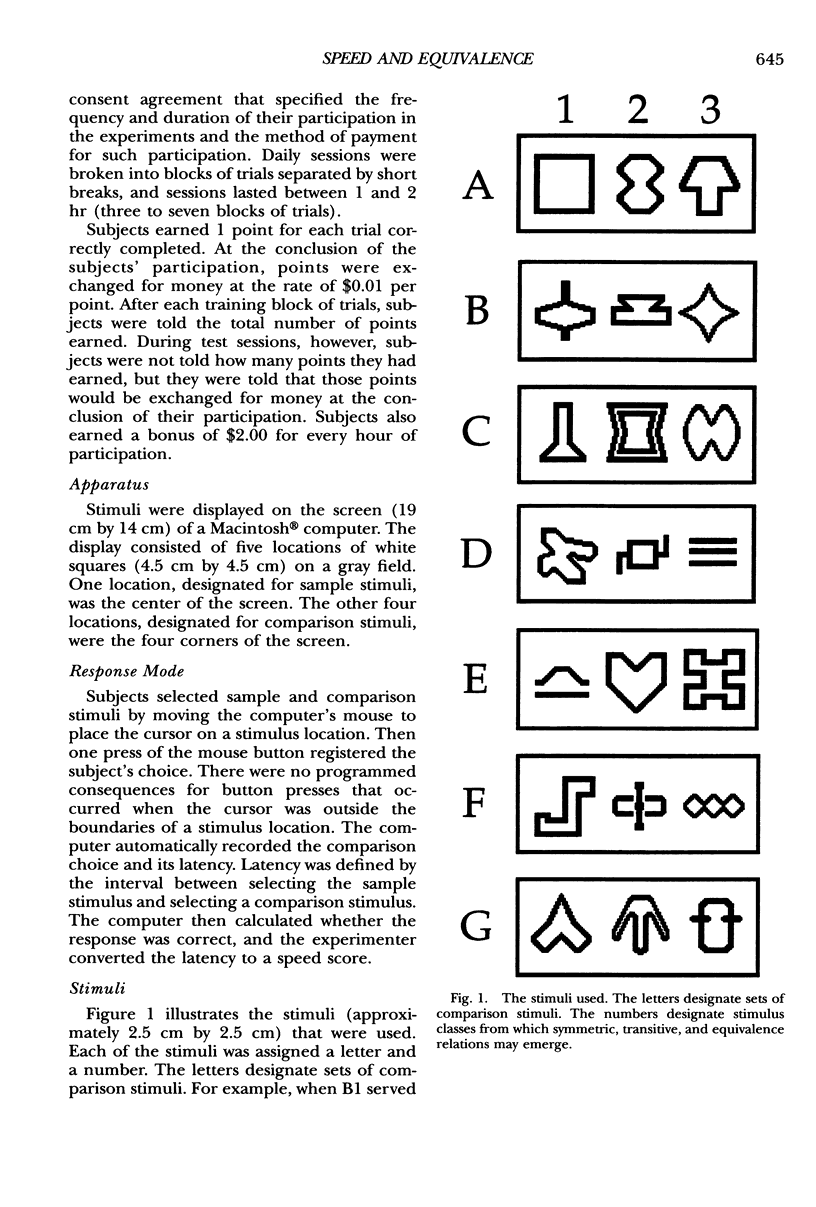
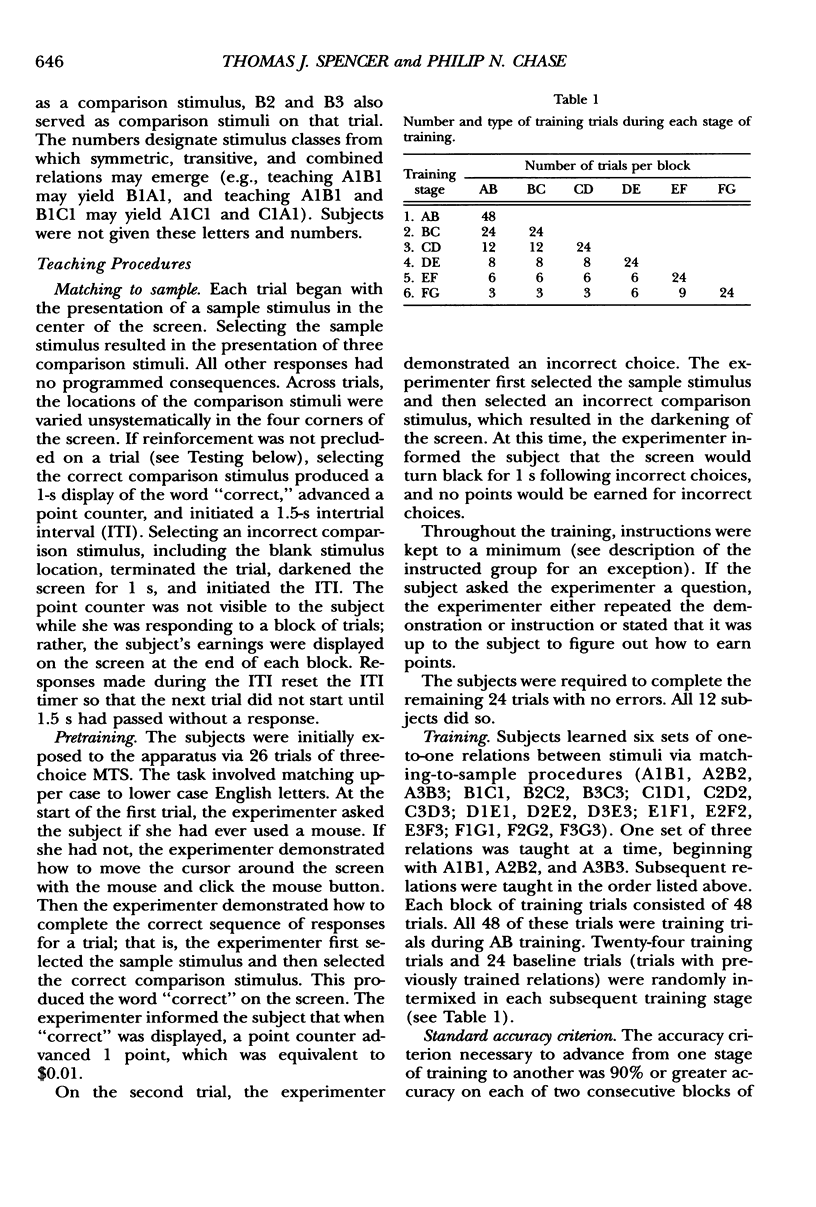

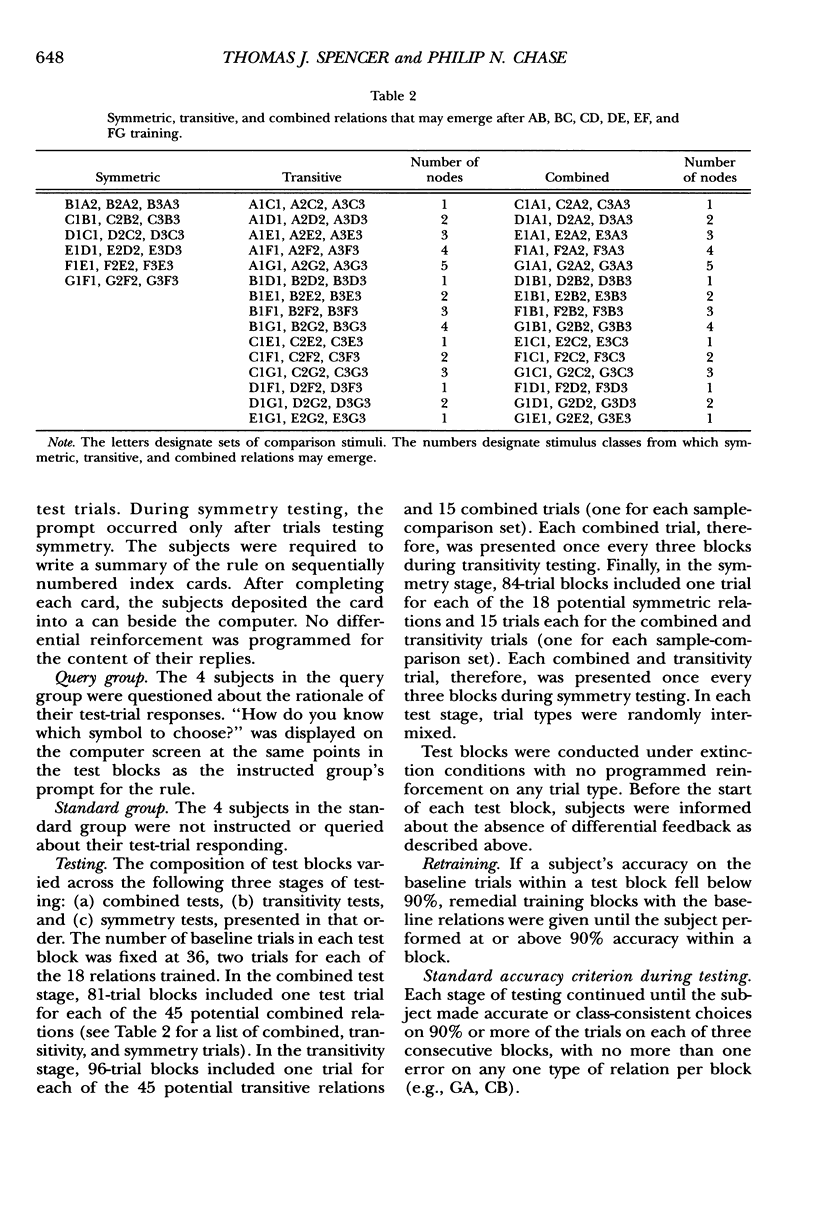
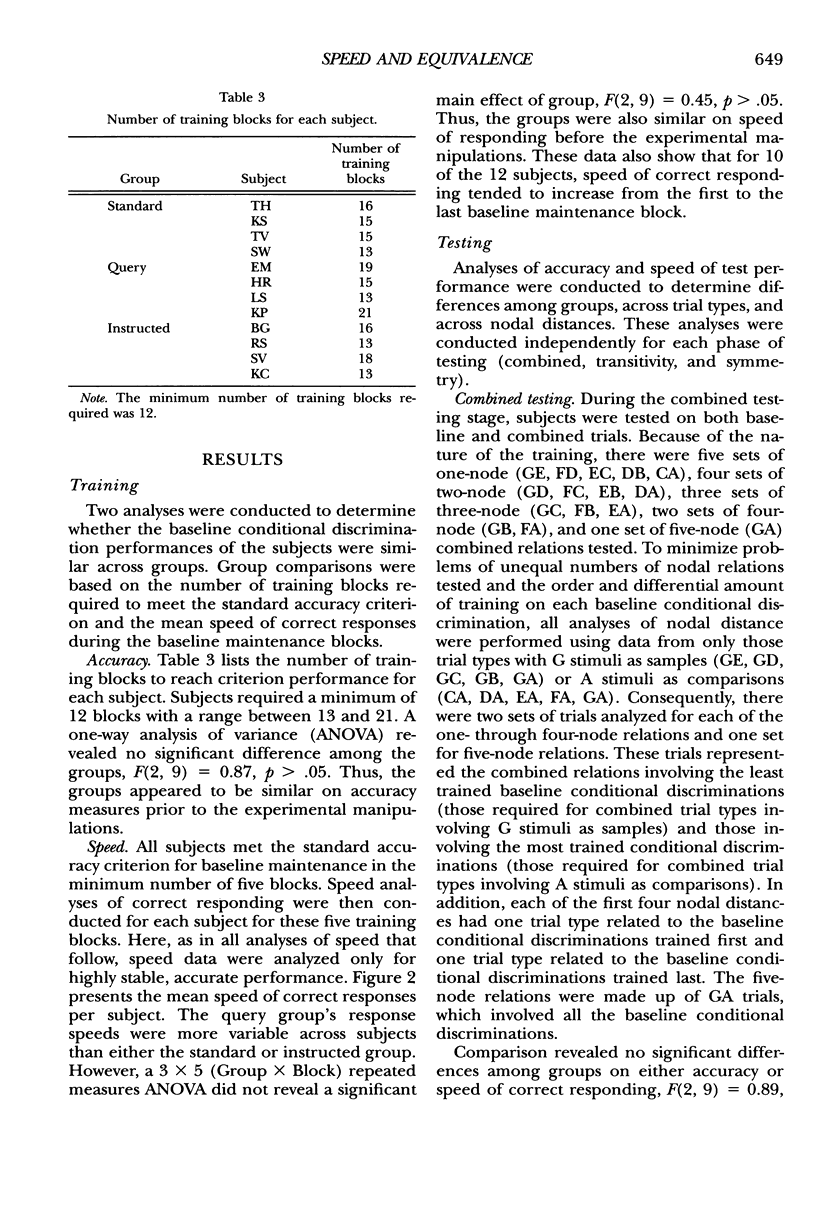
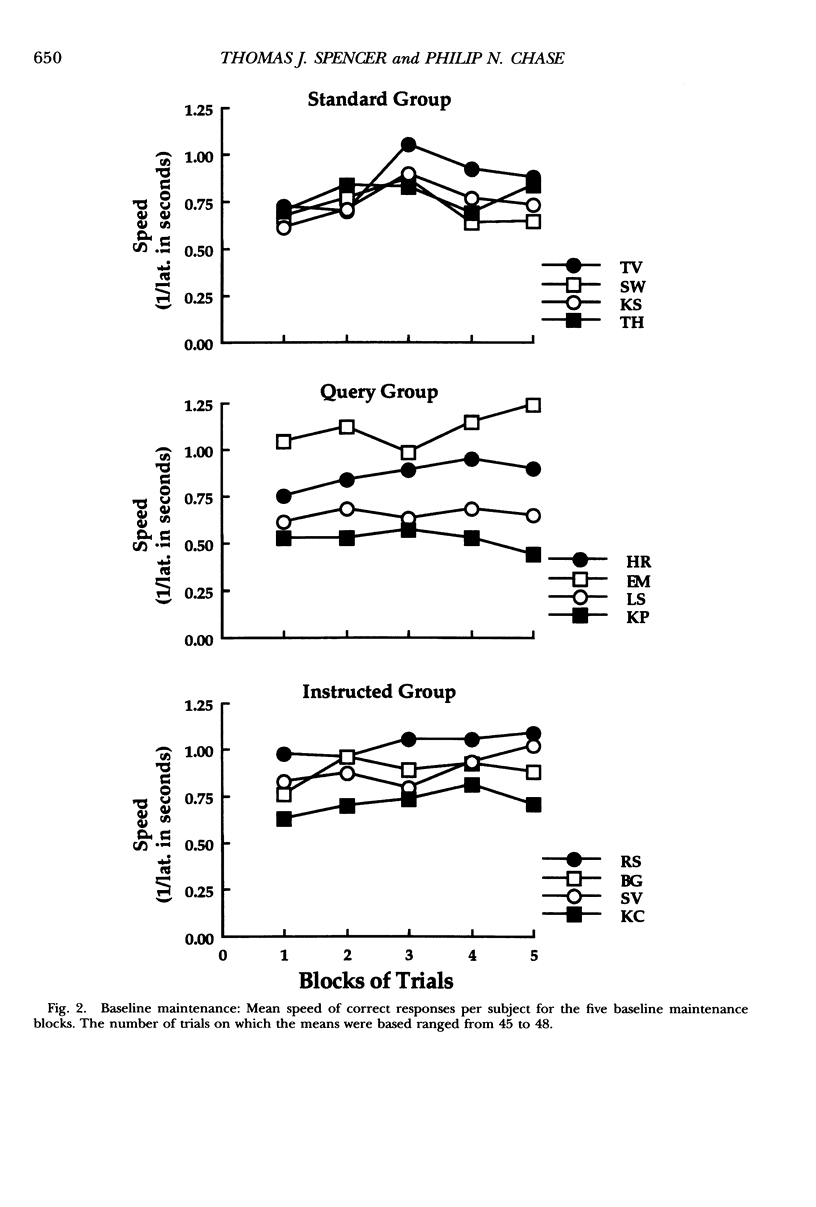
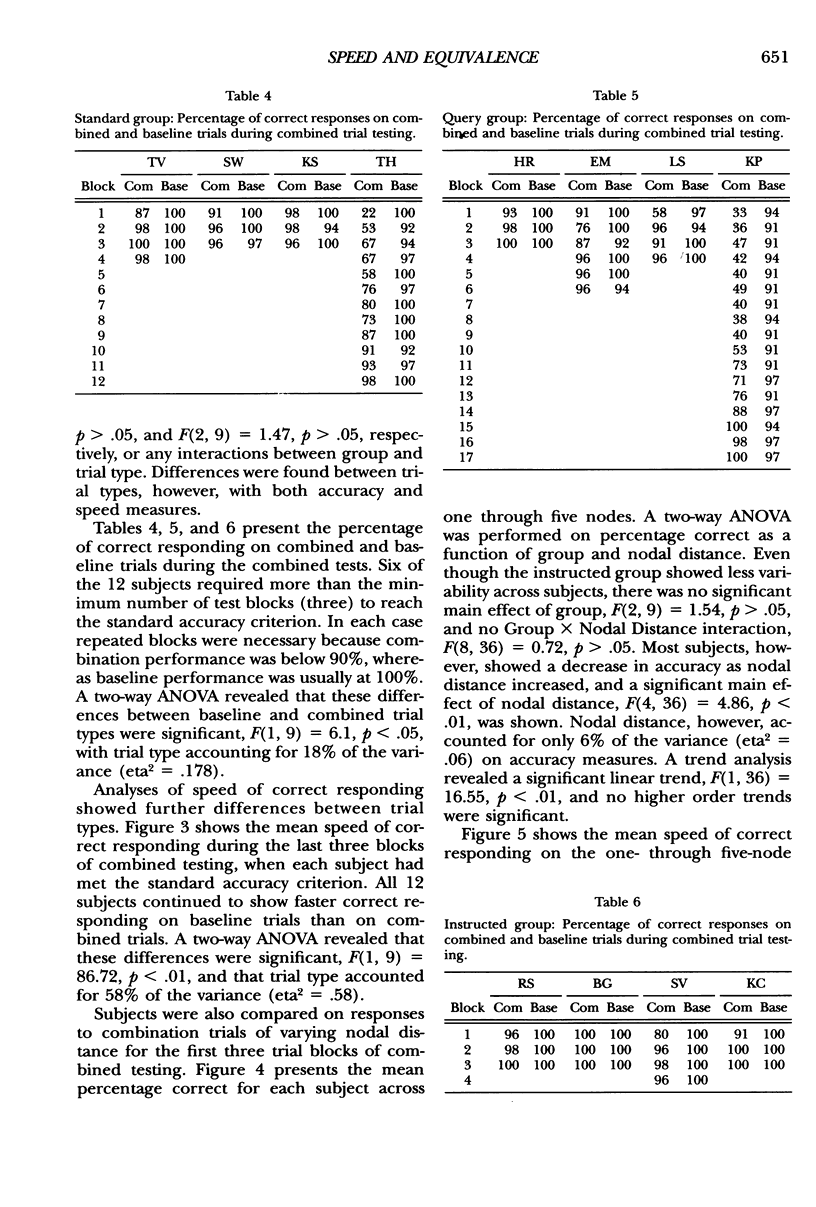

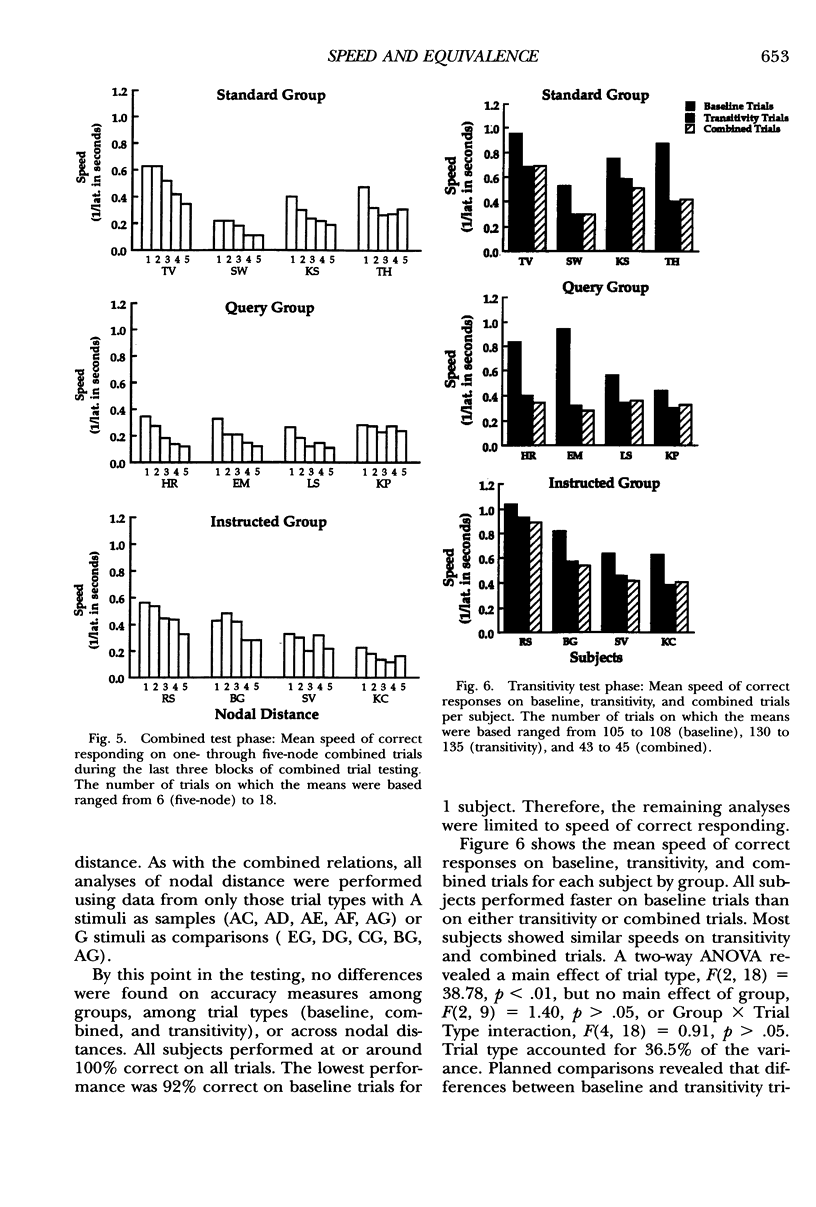
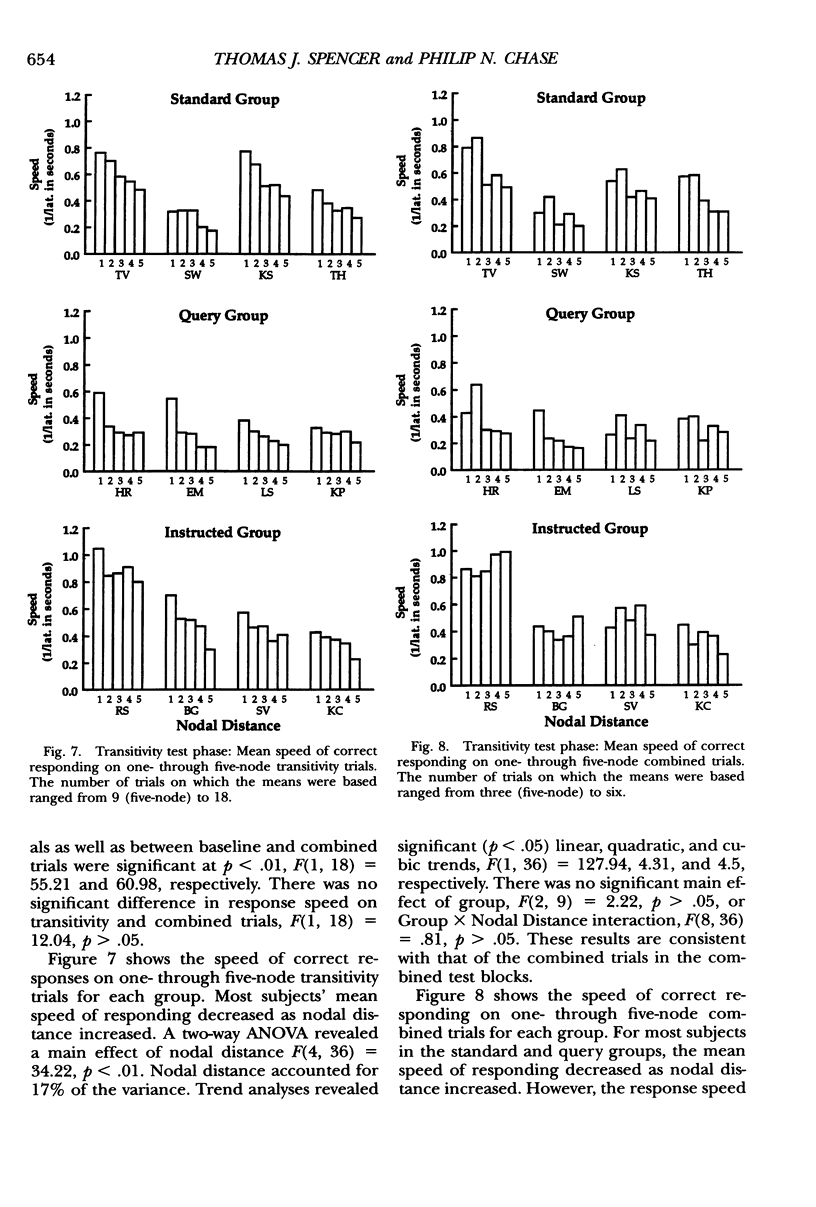
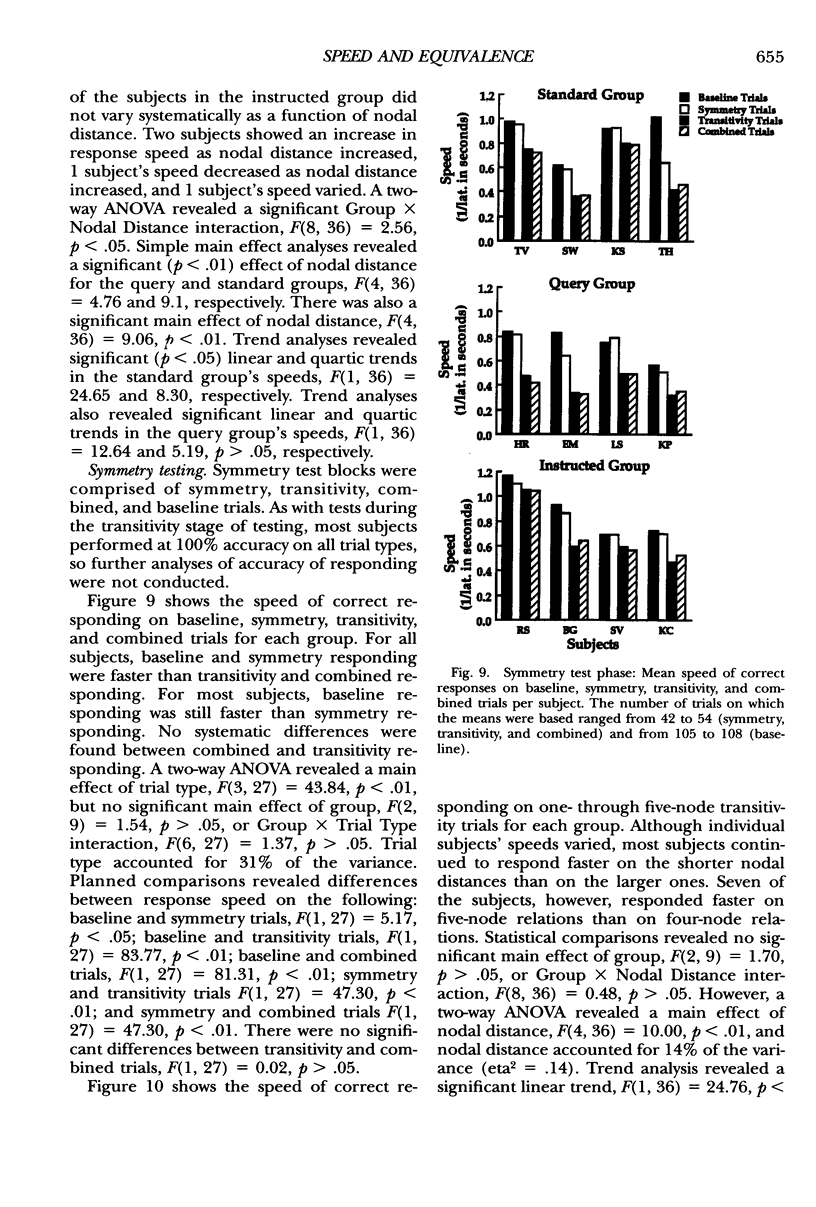
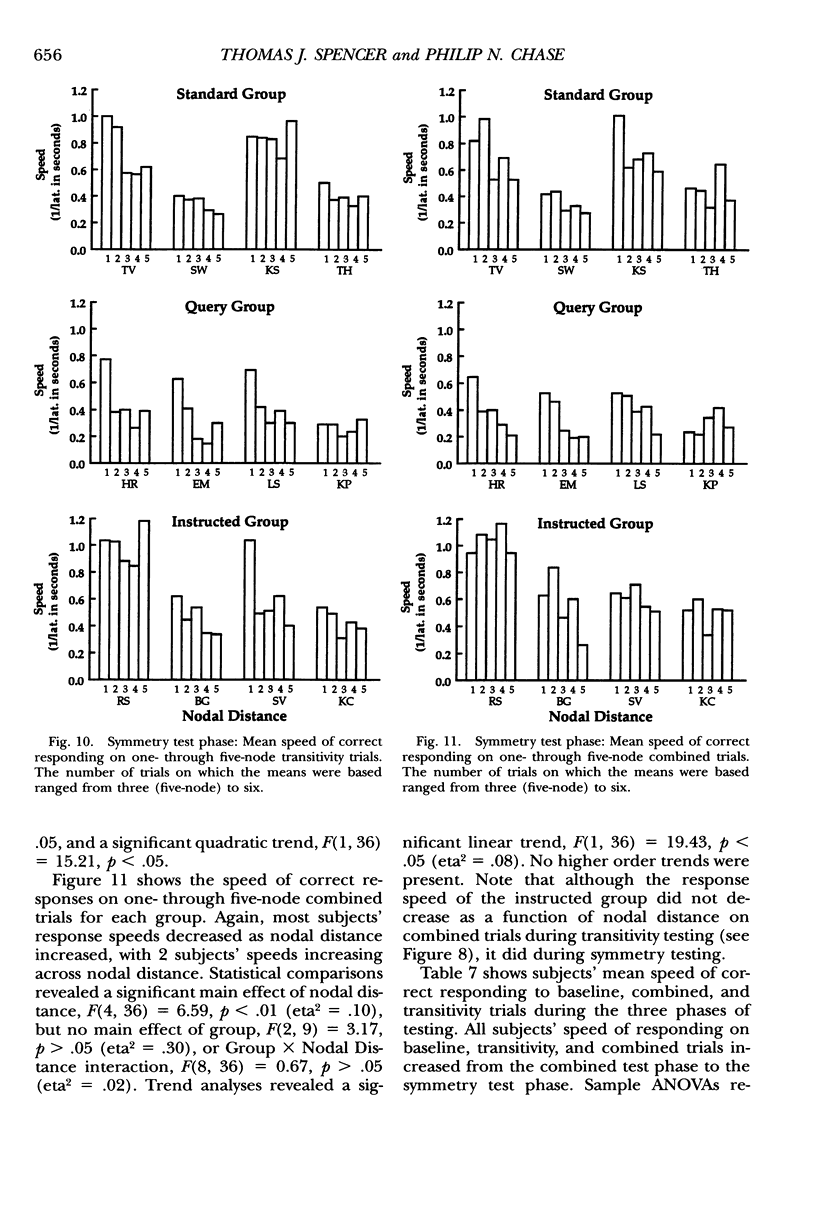
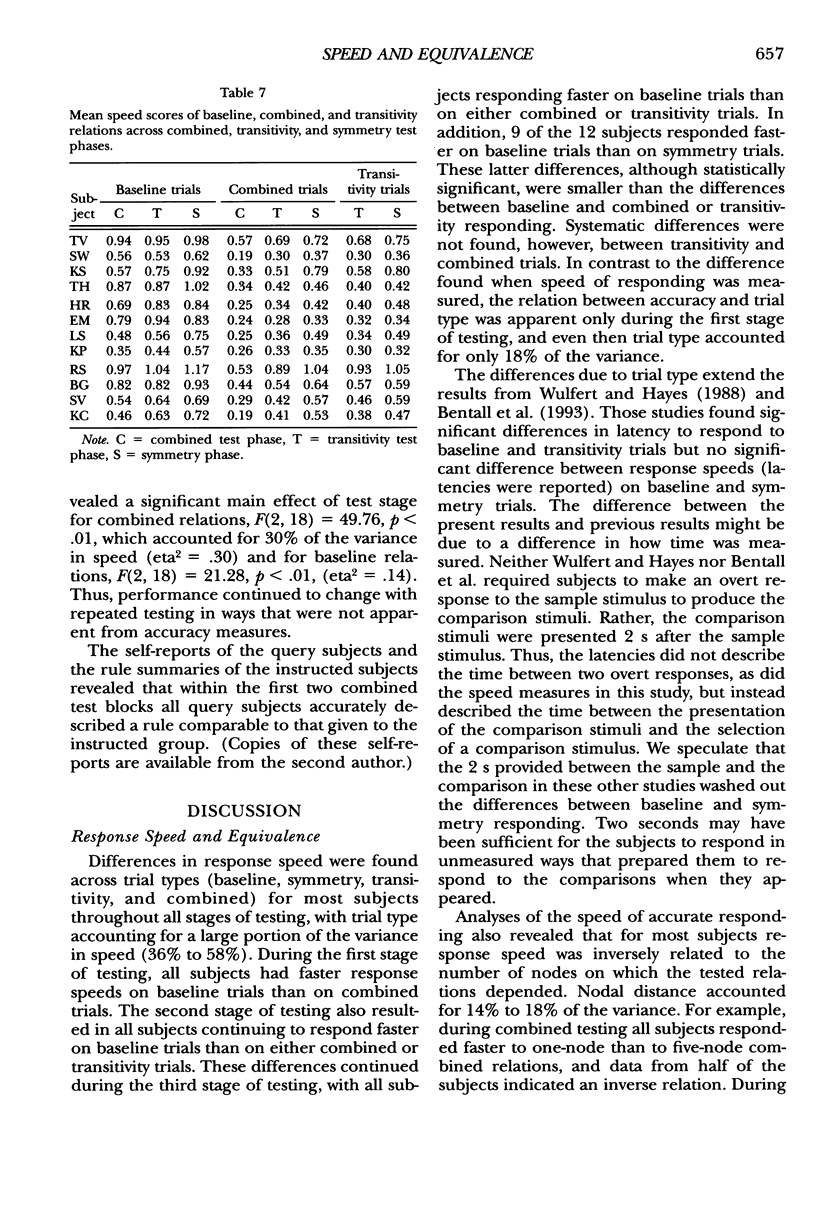

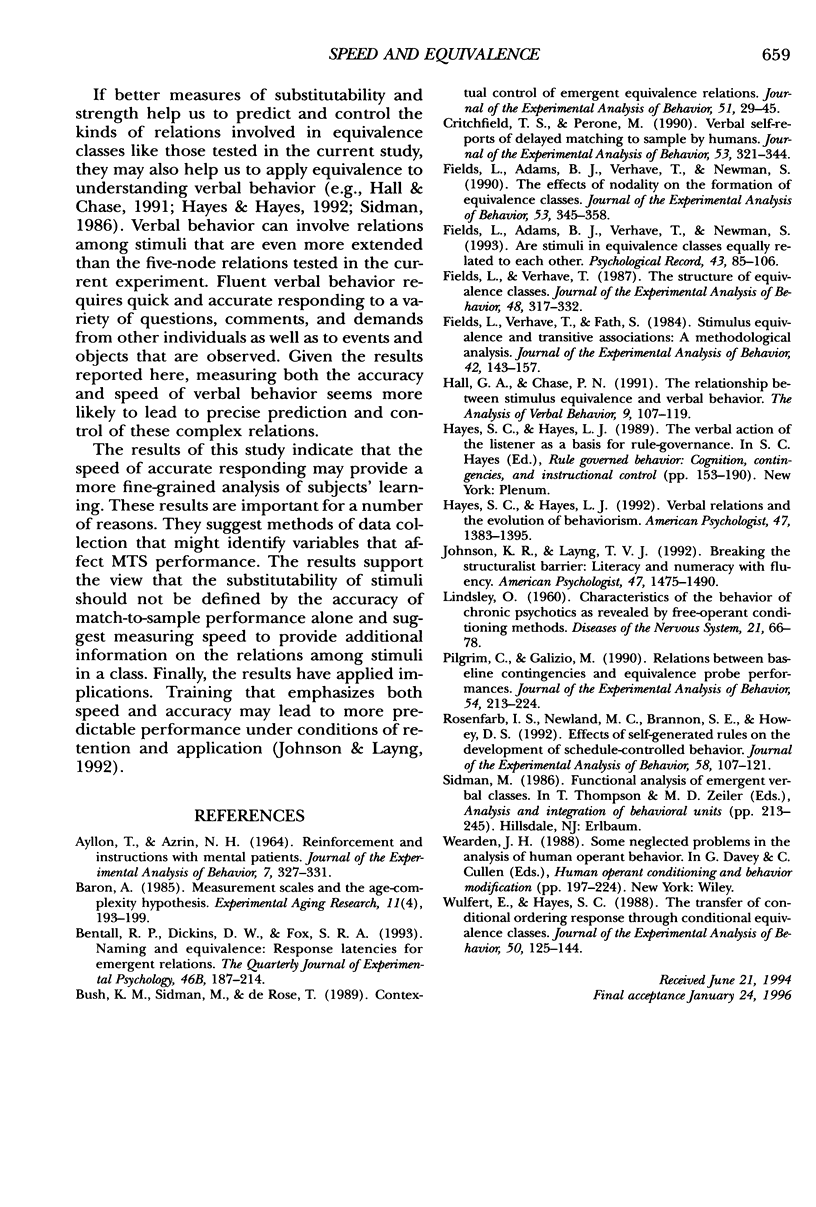
Selected References
These references are in PubMed. This may not be the complete list of references from this article.
- AYLLON T., AZRIN N. H. REINFORCEMENT AND INSTRUCTIONS WITH MENTAL PATIENTS. J Exp Anal Behav. 1964 Jul;7:327–331. doi: 10.1901/jeab.1964.7-327. [DOI] [PMC free article] [PubMed] [Google Scholar]
- Baron A. Measurement scales and the age-complexity hypothesis. Exp Aging Res. 1985 Autumn-Winter;11(3-4):193–199. doi: 10.1080/03610738508259187. [DOI] [PubMed] [Google Scholar]
- Bush K. M., Sidman M., de Rose T. Contextual control of emergent equivalence relations. J Exp Anal Behav. 1989 Jan;51(1):29–45. doi: 10.1901/jeab.1989.51-29. [DOI] [PMC free article] [PubMed] [Google Scholar]
- Critchfield T. S., Perone M. Verbal self-reports of delayed matching to sample by humans. J Exp Anal Behav. 1990 May;53(3):321–344. doi: 10.1901/jeab.1990.53-321. [DOI] [PMC free article] [PubMed] [Google Scholar]
- Fields L., Adams B. J., Verhave T., Newman S. The effects of nodality on the formation of equivalence classes. J Exp Anal Behav. 1990 May;53(3):345–358. doi: 10.1901/jeab.1990.53-345. [DOI] [PMC free article] [PubMed] [Google Scholar]
- Fields L., Verhave T., Fath S. Stimulus equivalence and transitive associations: A methodological analysis. J Exp Anal Behav. 1984 Jul;42(1):143–157. doi: 10.1901/jeab.1984.42-143. [DOI] [PMC free article] [PubMed] [Google Scholar]
- Fields L., Verhave T. The structure of equivalence classes. J Exp Anal Behav. 1987 Sep;48(2):317–332. doi: 10.1901/jeab.1987.48-317. [DOI] [PMC free article] [PubMed] [Google Scholar]
- Johnson K. R., Layng T. V. Breaking the structuralist barrier. Literacy and numeracy with fluency. Am Psychol. 1992 Nov;47(11):1475–1490. doi: 10.1037//0003-066x.47.11.1475. [DOI] [PubMed] [Google Scholar]
- LINDSLEY O. R. Characteristics of the behavior of chronic psychotics as revealed by free-operant conditioning methods. Dis Nerv Syst. 1960 Feb;21(2):66–78. [PubMed] [Google Scholar]
- Pilgrim C., Galizio M. Relations between baseline contingencies and equivalence probe performances. J Exp Anal Behav. 1990 Nov;54(3):213–224. doi: 10.1901/jeab.1990.54-213. [DOI] [PMC free article] [PubMed] [Google Scholar]
- Rosenfarb I. S., Newland M. C., Brannon S. E., Howey D. S. Effects of self-generated rules on the development of schedule-controlled behavior. J Exp Anal Behav. 1992 Jul;58(1):107–121. doi: 10.1901/jeab.1992.58-107. [DOI] [PMC free article] [PubMed] [Google Scholar]
- Wulfert E., Hayes S. C. Transfer of a conditional ordering response through conditional equivalence classes. J Exp Anal Behav. 1988 Sep;50(2):125–144. doi: 10.1901/jeab.1988.50-125. [DOI] [PMC free article] [PubMed] [Google Scholar]


